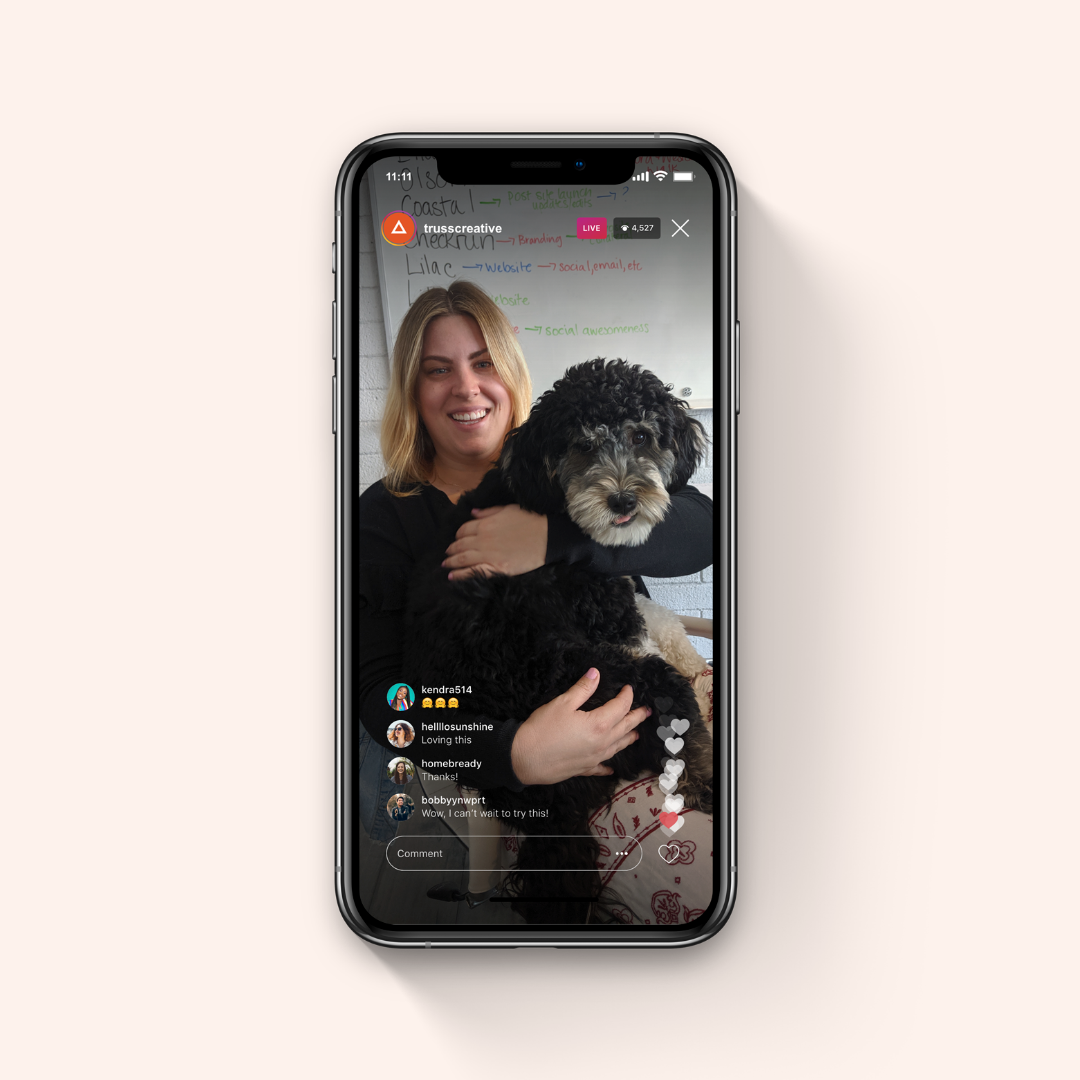2020 has seen many brands make big content and strategy shifts as they have moved their marketing and revenue activities online due to Covid. One of the few bright spots of the year has been seeing brands innovate ways to engage their customers using live video on social.
In a recent Sprout Social poll, when asked what trends they wanted to see brands use more of, 40% of consumers said they wanted more live video.
In these times of social distancing, “going live” is one of the best ways to make your brand experience tangible for customers. And the top social media platforms know it, supporting a host of tools and features that make live streaming video content accessible to brands of all sizes and budgets. But accessible doesn’t mean easy. There’s a lot to think about before you take your brand live. From content, to promotion, to post-production, to distribution, being successful with live video requires as much strategy and planning as any other marketing tactic—despite its off-the-cuff reputation. To start (and keep!) streaming like a pro, beware of these three common trappings.
The top 3 mistakes to avoid when going live.
Streaming without a unique position
Does your audience need another interview-style livestream? How about a how-to? Or a BTS (behind the scenes, for those not fluent in internet slang).
Content types abound, and there are many ways to be successful on live video, but a sure way to be forgettable is to give zero thought to who you want to serve and how. This is positioning 101.
Yes, there is room to pivot as you stream, learn, and interact with your audience after you launch, but you will be much more likely to succeed if you do advanced thinking about how to make your content unique, memorable and onbrand.
This will require some internal soul searching…
What’s your mission?
What’s your culture?
Who is in your talent pool?
and some external research…
Who are your content competitors?
What are they doing in terms of live video?
What are the gaps in your industry?
Is there a strategic partnership that you can leverage?
The answers to these questions will help you find your content’s best positioning—the place where your brilliance, capacity, and best opportunities collide.
Streaming with an unsustainable schedule
We cannot stress enough how important consistency is to the success of your live stream endeavor—especially when you are just getting started. The fleeting nature of live video means you have to train your audience to tune in in real time to get the most out of the experience. To build momentum, set their expectations by picking a day, place, and time where they can find you and show up for them consistently.
Where brands get into trouble is when they commit to a streaming schedule that is too aggressive for their team. When you take pre-production, promotion, production, and distribution into account, each video can take a considerable amount of time to put out. Deadlines get missed, things get rescheduled, and before you know it videos go MIA.
To avoid this, do an internal audit of your capacity before you launch to make sure your production schedule is tethered to reality. Map out a conservative 3 to 6-month plan and only add to it after you’ve executed consistently for that amount of time.
Streaming in a silo
As we’ve just determined, live streaming is time consuming if you’re doing it right. Why not get the most out of your efforts by taking the time to think about how to integrate this social media tactic into your existing marketing strategy and campaigns? It sounds so basic, but we can’t tell you how often we see brands create live video in siloes, completely disconnected from the rest of the strategy. These are such missed opportunities! Live video can supercharge the sense of urgency, engagement, and direct response of your existing campaigns. Content that features influencers outside of your organization or smart strategic partnerships, can lend your campaigns the third-party endorsement and word-of-mouth buzz that your PR team wishes it could deliver. Don’t squander the opportunities by isolating your live stream efforts from the rest of your marketing team.
Remember: the best live videos are entertaining, informative, and interactive, yes, but they ultimately should also leave your audience with a specific action to take.





